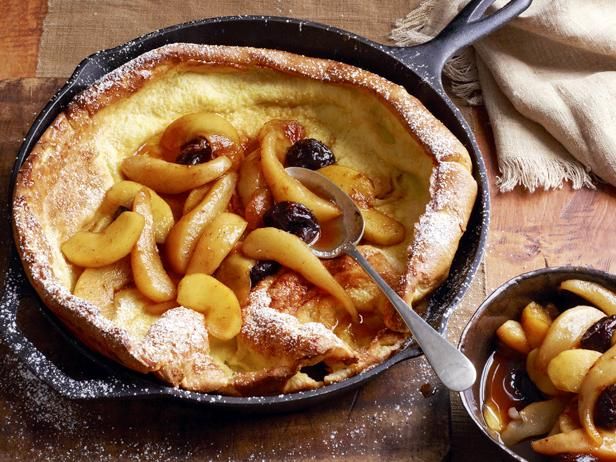There’s no doubt about it: When it comes to fruit, Americans prefer apples — not just for their taste and versatility, but for their robust health benefits and year-round availability, too. A recent study found that apples account for 29 percent of the fruit consumed by U.S. kids daily. To keep up with the demand, growers have begun reviving long-gone heirloom varieties, and high-tech breeders are creating new strains for every taste — tart apples, sweet apples, apples that don’t brown after cutting. But a quick trip to the grocery store can easily turn into an ordeal when faced with the dozen or so varieties in rotation at any given time. While this is nothing compared with the tens of thousands of apple varieties available in the U.S. at one point, it’s still a lot when you consider how heavily modern agricultural practices have streamlined our choices.

As we enter prime apple season, it’s important to keep in mind that not all breeds are created equal. While some varieties were destined to star in your Thanksgiving apple pie, others are better suited for applesauce, salads or eating fresh out of hand. If you’ve been underwhelmed by previous attempts to cook or bake with apples, the problem may have nothing to do with your kitchen skills and everything to do with your choice of fruit. The following are just a sampling of the countless breeds you’ll find in markets every fall, with tips on the best uses for each variety.
Fuji
As a general rule, Fujis are too juicy for baking, but they’re great for eating fresh. Use them to add a touch of sweetness in salads and slaws — or, slice them up and use them as a sweet-crisp complement to your fall cheese board, as Rachael Ray does in her recipe for Warm Brie with Fuji Apple, Pear and Melba Toasts. However, if gently simmered on the stovetop, Fujis can make a wonderfully sweet and supple topping for fresh baked goods, as you’ll find with Food Network Kitchen’s Souffle Pancake with Apple-Pear Compote (pictured at top).
Gala
Sweet, aromatic and highly versatile, Galas rank among the nation’s most-popular apple varieties for a reason. They’re especially suitable for creating sauces, but you can also add them to salads or serve them baked. For a light fall dessert, try Bobby Flay’s Baked Apples with Oatmeal and Yogurt (pictured above). Alex Guarnaschelli makes use of Galas by baking crisp and snackable Apple Chips.
Golden Delicious
By now you’ve probably heard the accusations that Golden Delicious have a dull taste and mealy texture. If your experiences with this bright yellow apple have been disappointing, then you may have been eating fruit that was picked too early or stored too long. Truth be told? A ripe, freshly picked Golden is exceptionally rich — some would even say custardy. Ellie Krieger uses them as a tender addition to her sweet Apple Muffins (pictured above). They also play up the buttery flavor in Giada De Laurentiis’ light and flaky Apple Crostata.
Granny Smith
Tart in taste, with taut green skin, Granny Smiths lend bright flavor and invigorating crunch to salads, as you’ll see in this seasonal Chopped Apple Salad with Toasted Walnuts, Blue Cheese and Pomegranate Vinaigrette (pictured above). Picked in November, this late-season variety is perfectly tasty in classic fall desserts, too. In fact, if you like apple pie with a bit of a tart bite, Ina Garten’s Deep Dish Apple Pie is just the recipe for you.
Honeycrisp
Of course, some people like to bake with apples more akin to candy than fruit. If that’s the case, then this is the variety for you. Honeycrisps are in high demand for their sweetness, but the supply is so limited that they often sell out within a few weeks, even with prices at $4.50 a pound in some markets. Try Food Network Kitchen’s Whole Grain Caramel Apple Oven Pancake (pictured above) or Trisha Yearwood’s Baked Apples, and prepare for explosively juicy sweetness.
McIntosh
Bright, fresh and juicy, this versatile apple finds its home in savory and sweet dishes alike, as evidenced by these recipes for Turkey and Stuffing Casserole (pictured above) and Old-Fashioned Apple Crisp. If you’re making applesauce, McIntoshes are hands down the best apple to use. Try Food Network Kitchen’s classic Applesauce and see for yourself.
Northern Spy
Tart but honeyed, sumptuous yet subtle, Northern Spy is the beautiful young starlet of the apple kingdom. The skin — pale green and flushed with red stripes — gives away the flavor: Tart at first with an underlying sweetness. This variety produces fairly late in the season and when eaten fresh, it serves up a particularly high level of vitamin C. Commonly known as “Northern Pie Apples,” these are best suited for pies and other desserts. If you’re unfamiliar with Northern Spy, test the waters with this easy Apple Pie recipe. This variety is commonly used in juice and cider production, too.
Fuente: www.yahoo.com
